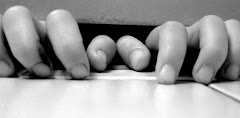
Despite what one might conclude from listening to talk radio or from reading our local paper’s editorial cartoons, it turns out that the brain is pretty complicated. Of course scientists have known this for decades. Example: A man endures a horrific industrial accident that lodges an iron spike into his frontal lobe, and from that point on he believes that all cats are really shopping carts. Okay, I made that up. Or he might start to believe that crocs are ridiculous footwear. Okay, that’s true whether or not one has a spike lodged in one’s brain. Let’s not lose focus of the main point, which is that tweaking (or inserting a spike into) the brain reveals how the “self” is knitted together--if it is not altogether illusory—by the interaction of a host of separate parts of the brain.
Here’s an interesting example taken from a book I read recently. A guy suffers a terrible accident (or surgery) that severs his corpus callosum, the part of the brain that connects the two hemispheres. The two spheres each have different functions, and the corpus callosum is the text messaging mechanism between the two halves. Scientists thought it would be revealing to see what life is like for a guy whose two perfectly functioning hemispheres do not communicate with one another. So the scientists decided to have some fun with him. Or should I say with “them.” Because it turns out there were at least two dudes in this guy’s brain.
They covered one of the guy’s eyes and asked him to read a note that told him to “leave the room.” The other side of the brain, the side that deals with purpose and meaning, was left in the dark because its corresponding eye was covered. The man obeyed the note as instructed, but as he was walking out the door the scientists asked the man why he was leaving. And without missing a bloody beat the guy said, “to get a coke.” And the guy believed what he was saying. In other words, the part of the brain that came up with reasons for action acted independently of what actually prompted him to act. The justification came after the action, and yet the self felt like the decision came ahead of time. The scientists concluded that the brain is a remarkably good b.s. artist, and the chief person being b.s’d is ourselves.
Which pretty much rings true for me.
Here’s an interesting example taken from a book I read recently. A guy suffers a terrible accident (or surgery) that severs his corpus callosum, the part of the brain that connects the two hemispheres. The two spheres each have different functions, and the corpus callosum is the text messaging mechanism between the two halves. Scientists thought it would be revealing to see what life is like for a guy whose two perfectly functioning hemispheres do not communicate with one another. So the scientists decided to have some fun with him. Or should I say with “them.” Because it turns out there were at least two dudes in this guy’s brain.
They covered one of the guy’s eyes and asked him to read a note that told him to “leave the room.” The other side of the brain, the side that deals with purpose and meaning, was left in the dark because its corresponding eye was covered. The man obeyed the note as instructed, but as he was walking out the door the scientists asked the man why he was leaving. And without missing a bloody beat the guy said, “to get a coke.” And the guy believed what he was saying. In other words, the part of the brain that came up with reasons for action acted independently of what actually prompted him to act. The justification came after the action, and yet the self felt like the decision came ahead of time. The scientists concluded that the brain is a remarkably good b.s. artist, and the chief person being b.s’d is ourselves.
Which pretty much rings true for me.













.jpg)



